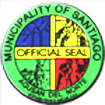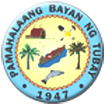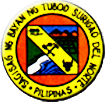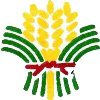Partnerships for Biodiversity Conservation: Mainstreaming in Local Agricultural Landscapes” otherwise known as the Biodiversity Partnerships Projects (BPP)
Project ID 00074945
Basic Information
|
GEF Approval
|
September 2010
|
|
Project Duration
|
6 Years (Sept 2012-Aug 2016)
|
|
Implementing
Partner
|
Department of Environment and Natural Resources
|
|
Project Partners
|
NEDA, DA, DILG, DTI, NCIP, DOT, NCW, League of Provinces, Cities, and Municipalities, CI-Phils, Haribon Foundation, FFI, PEF, LMDA, PBCFI
|
General Objective
To assist Local Government Units (LGUs) in critical eco-regions of the Philippines to better incorporate the conservation and sustainable use of biodiversity resources in their development planning systems and economic growth strategies.
PROJECT OUTCOMES
- National-level systems, policies, tools and capacities are in place to support LGU level biodiversity conservation efforts;
- Local Government Units encompassing at least 1.6 million ha in 5 key bio-geographic regions have the tools & capacities to integrate sustainable management into decentralized government structures; and
- Systems, policies, tools & capacities for landscape-level biodiversity conservation & sustainable development are applied in 8 pilot sites covering at least 700,000 hectares across 5 critical bio-geographic regions (Luzon, Palawan, Negros-Panay, Mindoro & Mindanao).
Outcome 1. National level systems, policies, tools & capacities are in place to support LGU-level biodiversity conservation efforts
Outputs:
1.1 Policy & tools for biodiversity impact assessments of nat’l. agricultural & natural resource policies, plans & programmes adopted by DA & DENR
1.2 National-level policy, programs & technical capacity to support biodiversity-friendly agricultural practices
1.3 Enhanced national-level system for regulation of trade in wild plant & animal resources
1.4 Policies to encourage investments in biodiversityfriendly business opportunities
1.5 National-level systems for knowledge management
Outcome 2. LGUs encompassing at least 1.6 M has in 5 key biogeographic regions have the tools and capacities to integrate sustainable management into decentralized government structures
Outputs:
2.1 Tools, guidelines & methods developed to mainstream biodiversity in local development policy making, planning, budgeting, M & E
2.2 Toolkits & implementation capacity for application of SEAs, as well as, landscape & seascape level natural resource management, across multiple LGUs
2.3 LGU-level policy framework & technical capacity to support biodiversity-friendly agricultural practices in critical eco-regions
2.4 Strengthened local regulation of trade in wild plant & animal resources
2.5 Regulatory structures & incentive systems to encourage the development of biodiversity-friendly businesses, including investor codes of conduct, established at the LGU level
2.6 Intra-LGU data & knowledge-sharing & advocacy network to synthesize project lessons learned into national policy & decision-making
Outcome 3. Systems, policies, tools & capacities for landscape-level biodiversity conservation & sustainable dev’t are applied at 8 pilot sites covering at least 700 has. across 5 bio-geographic regions
Outputs:
3.3. Biodiversity-friendly projects, programmes & policies achieved via impact assessments incorporated into LGU planning process (all sites)
3.4. Trans-boundary integrated planning achieved via the implementation of toolkits (QPL, CPM, NNNP, Lake Mainit, Mt. Hamiguitan
3.5. Biodiversity-friendly agricultural practices (e.g. use of indigenous crop varieties), achieved via enhanced & extended standards & associated certification processes. (all sites)
3.6. Improved regulations & enforcement of wild animal & plant gathering & trade achieved via strengthening of permitting system & implementation of trade.
3.7. Biodiversity-friendly investment programs promoted in selected sites (Siburan, NNNP, CPM, Mt. Hamiguitan)
3.8. Incentive systems and innovative financing programs to reduce destructive activities by PA/KBA dependent communities (PES in QPL and NNNP, pilot CCAs in PPLS, QPL, CPM, NNNP and Mt. Hamiguitan)
3.9. Data and knowledge management to underpin preceding themes (awareness campaigns, support to inter LGU knowledge sharing, biodiversity monitoring, biological assessments)
Criteria for Site Selection
- Representation of five biogeographic regions
- On-the-ground presence of partners or potential partners
- Overlap with one or more Key Biodiversity Areas (KBAs)
- Strong local government unit and other local stakeholder support
- Not supported by any other major donor funding
Management/Implementation Arrangements





























